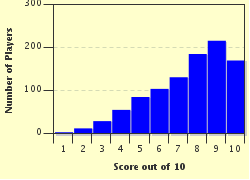Quiz Answer Key and Fun Facts
1. The dominant song of 1971 was written by Hoyt Axton, recorded by Three Dog Night and gathered 1676 points. It charted for 17 weeks, six of them at Number One. Here are the opening lines... I'm sure you'll recognize them!
"Jeremiah was a bullfrog
Was a good friend of mine
I never understood a single word he said
But I helped him drink his wine"
Was the song's title "Jeremiah Was A Bullfrog"?
2. Accumulating 1556 points, the 2nd ranked song for 1971 topped the charts for five weeks during a 21 week run in the Hot 100. What song was it with this lyrical clue?
"All I needed was a friend to lend a helping hand
But you turned into a lover and mother, what a lover, you wore me out
All you did was wreck my bed
And in the morning kick me in the head"
3. The 3rd ranked song of 1971 was one of the prettiest, and perhaps the most poignant, of the era. Five weeks at Number One and 17 weeks in the Hot 100, it collected 1464 points. Here's your lyrical hint, the opening lines of the song.
"Stayed in bed all morning just to pass the time
There's something wrong here, there can be no denying
One of us is changing, or maybe we've just stopped trying"
4. "Hey girl what ya doin' down there
Dancin' alone every night while I live right above you
I can hear your music playin'
I can feel your body swayin'"
This slice of lyric is from the 4th ranked song of 1971. It scored 1370 chart points based on an 18 week Hot 100 presence including three weeks at the top. What song was it?
5. Two of the top 10 ranked songs of 1971 were cover versions of hits that previously had Billboard success. This one, ranked 5th, peaked at Number 20 in 1968 as performed by a British artist but marched straight to the top in 1971 when covered by an American group, gathering 1271 points en route. Here's part of the lyric.
"They took the whole ________ nation
Put us on this reservation
Took away our ways of life
The tomahawk and the bow and knife"
The complete title of the song was "Indian Reservation (The Lament Of The _________ Nation). Please identify the name of the Indian tribe that fills in the blank of both the lyric and the parenthetical title.
6. The song ranked 6th for 1971 is represented by these lyrics:
"I can tell you've been hurt by that look on your face, girl
Some guy brought sad into your happy world
You need love, but you're afraid that if you give in
Someone else will come along and sock it to ya again"
It garnered 1261 points largely due to its presence at Number One for a solid five weeks, one third of its life span within the Hot 100. The first two lines suggest a slow, melancholy song, but the popular phrase at the time, "sock it to ya", belies that notion! Do you think you know it?
7. "Krishna Krishna, Hare Hare
Gurur Brahma, Gurur Vishnu
Gurur Devo Maheshwara
Gurur Sakshat
Parabrahman, Tasmai Shri
Gurave Namah, Hare Rama
Hare Krishna, Hare Krishna
Krishna Krishna, Hare Hare"
Lyrics from the Number One song on the Indian subcontinent in 1971. Actually, I honestly don't know if that was the case but I wouldn't be surprised... it was Number One everywhere else in the English speaking world! Number One on Billboard for four weeks and the 7th ranked song of 1971 with 1247 points, can you deduce which hit we're highlighting here?
8. Securing the 8th position in the rankings for 1971 was a lovely little ballad that spent four weeks at Number One among its 15 weeks in the Hot 100. With 1222.5 points, barely nosing out the 9th ranked tune by .25 points, identify it with help from this lyrical segment.
"I can think of younger days when living for my life
Was everything a man could want to do
I could never see tomorrow, but I was never told about the sorrow"
9. Ranked 9th for 1971 was a song recorded by The 5th Dimension. It peaked at Number Two for a couple of weeks but with 10 weeks in the Top 10 and 19 weeks in the Hot 100, earned 1222.25 points. This is your lyrical clue, you guess the song's title.
"Why did he leave me
Now I´ve got one less egg to fry
One less egg to fry
And all I do is cry"
10. The second of the cover songs to rank among the top 10 of 1971 just eked in with 1132 points. It originally spent two weeks atop the charts in 1963 while this version trumped it with three weeks at Number One. Here are a few lines.
"I know that your lips are sweet
But our lips must never meet
I'm dating somebody else
And I must be true"
Steve Lawrence performed the original... who recorded this 1971 cover version of "Go Away Little Girl"?
Source: Author
maddogrick16
This quiz was reviewed by FunTrivia editor
gtho4 before going online.
Any errors found in FunTrivia content are routinely corrected through our feedback system.

